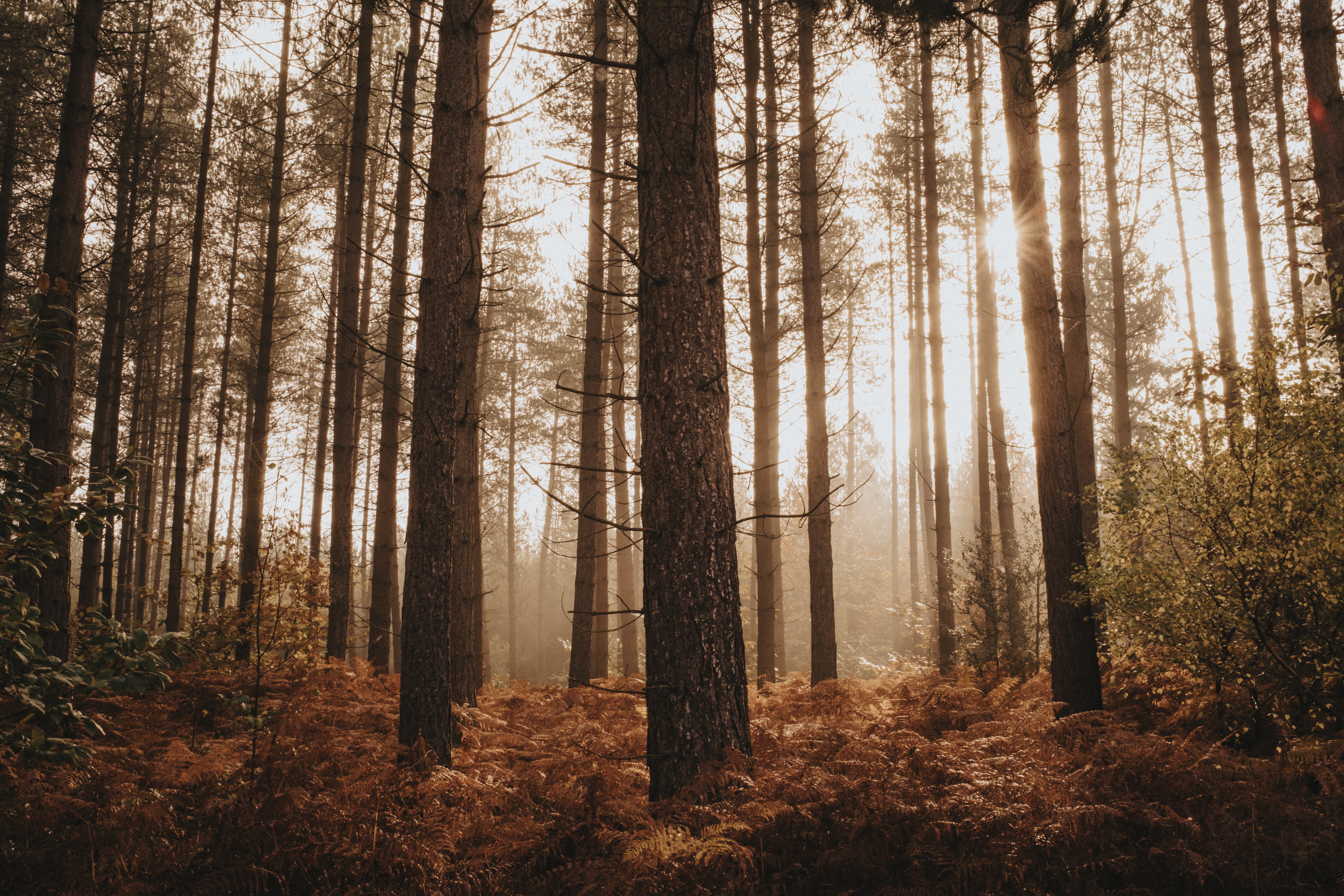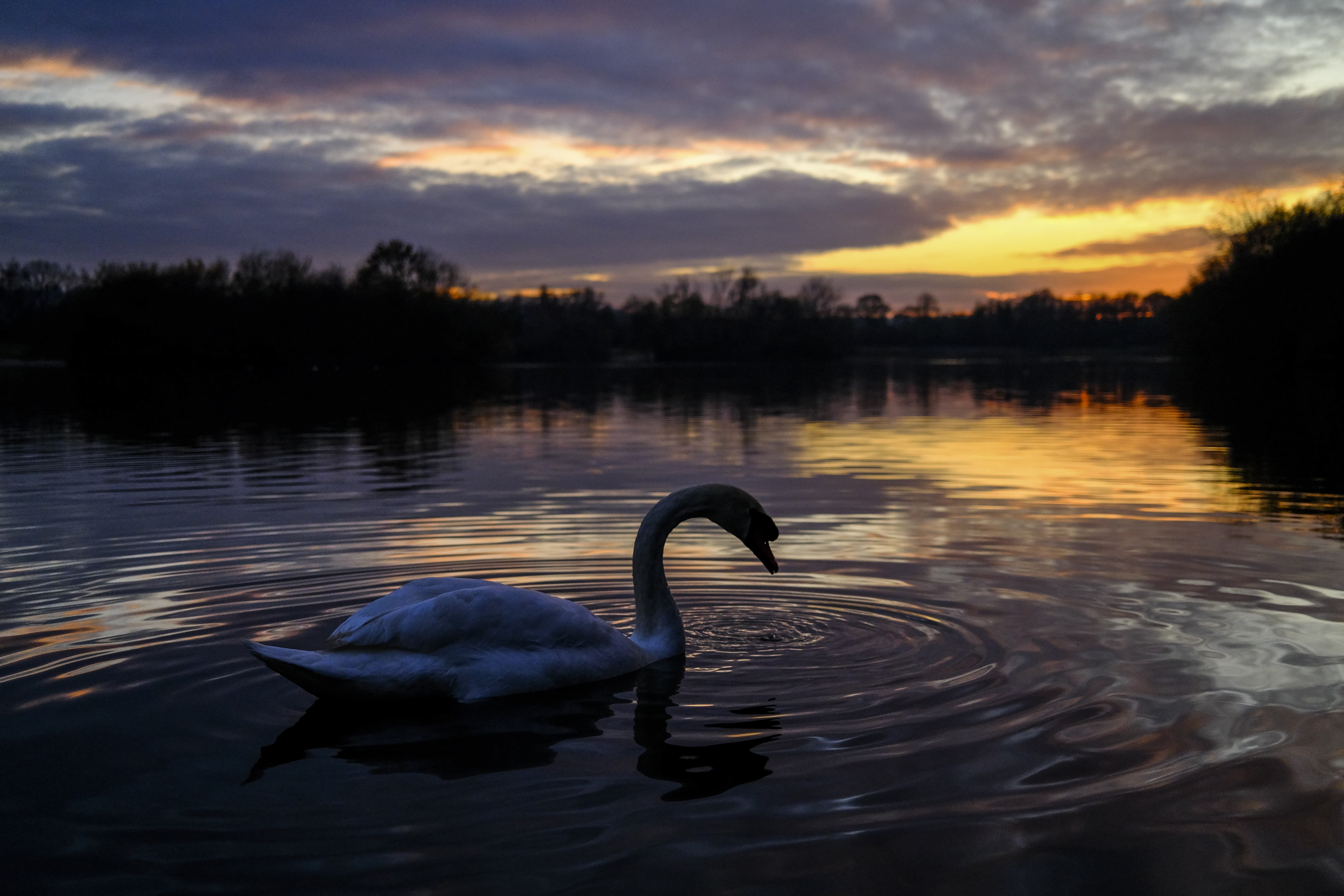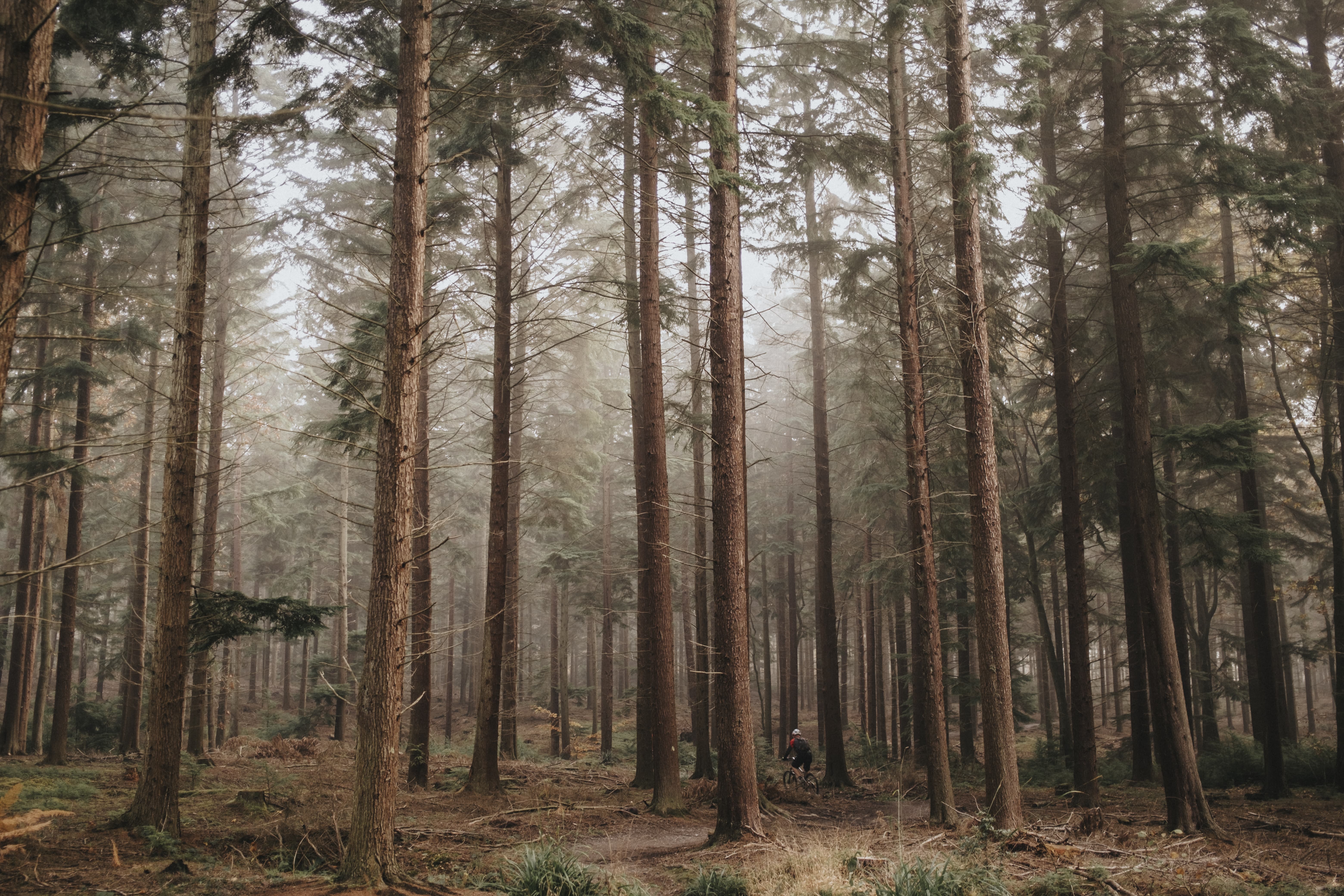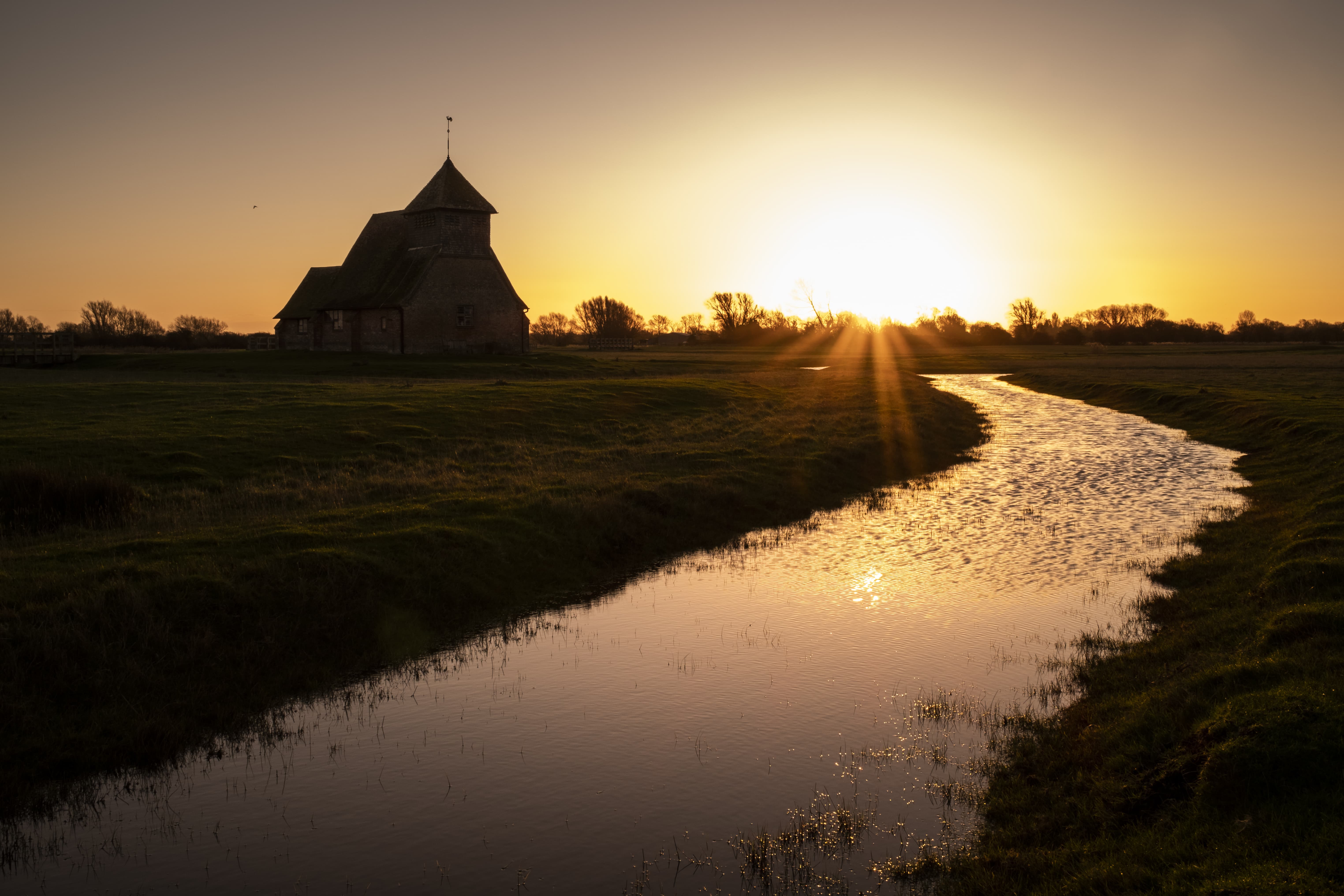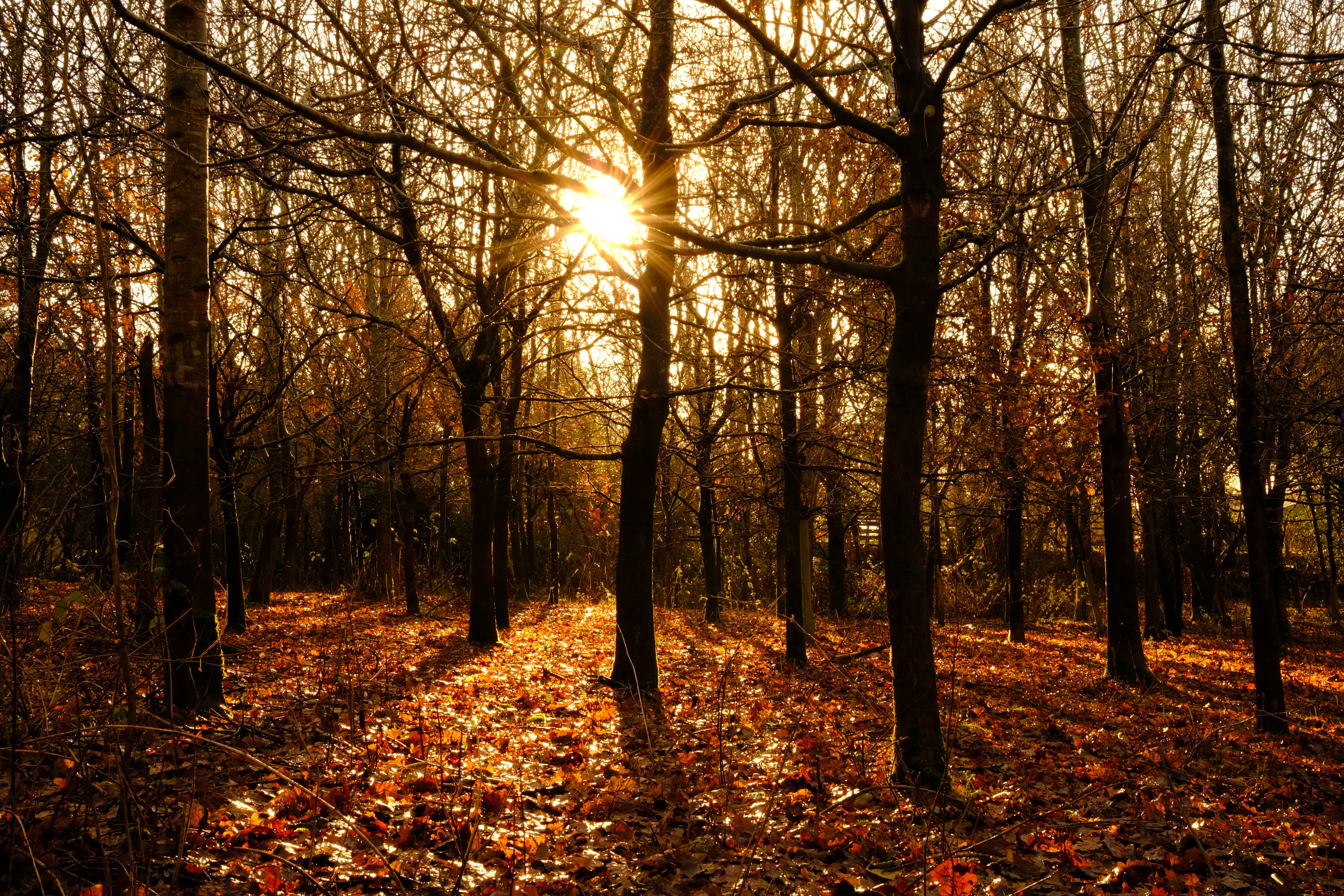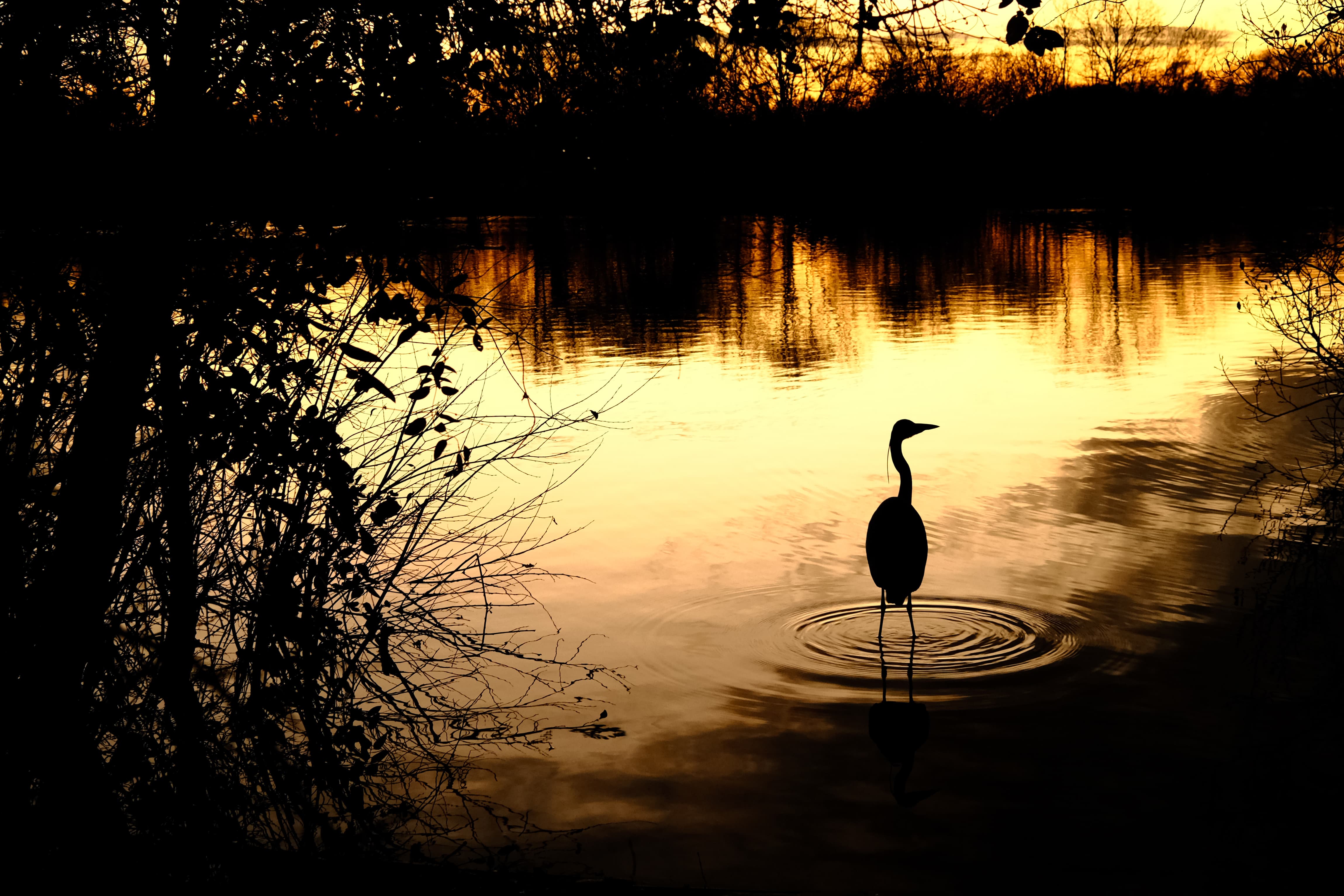The best camera is the one you have with you is a cliché we’ve all heard before. As much as it states the obvious, it does have relevance in today’s society where there can be big rewards for being the first person to record a crisis, extraordinary event or unexpected moment.
Most of the time these situations to which I refer are recorded on smartphones, which can be pulled from pockets to snap stills or snippets of video in seconds. I have nothing against people using phones to document world events and daily life, but there’s part of me that feels like I’m not taking photography seriously when I do it. Smartphones will, in my opinion, always lack the same creative and inspiring feeling you get when you lift a viewfinder to your eye and operate a camera with tactile controls at your fingertips.
Ever since reviewing the Fujifilm X100V last year I’ve had an itch I’ve needed to scratch. A practical pocket compact seemed like it could be the perfect answer to get away from using my smartphone when I don’t have my DSLR, or small mirrorless camera to hand.
If I needed another reason, my increased interest in cycling since lockdown regularly presents opportunities to get some great shots at first light and I often pass subjects and other points of interest that justify a brief stop for a quick shot. Neither my DSLR nor mirrorless camera really cut it for this purpose unless I carry a backpack, which I’m not fond of on long rides or when heading out for a brisk walk.
But something had to give if I was serious about the idea of owning an X100V as I only had £500 to spend, not a penny more. After deciding to part with my Fujifilm X-T10 and XF 23mm F1.4 R (which MPB.com offered me £520 for), I had a shortfall of £780 to make up.
Browsing Fujifilm’s online shop opened my eyes to the idea of buying a refurbished model, which at £999 brought it within budget. Minutes later I decided to bite the bullet. One decision remained. Should I buy in black or silver?
Our full review of the Fujifilm X100V can be found by clicking here.
Fujifilm X100V: Discreetness
I was shocked by the interest photographers expressed in the X100V when I reviewed it. On one day alone three people approached me to inquire about it. At first I thought it was because I had one of the first production samples in the country hanging off my shoulder but soon realised people were attracted to its retro design and wanted a closer look.
Members of the public who were less savvy would pass and say ‘that’s a lovely looking camera’ or ask if it took film. As much as I adore the appearance of the X100V in black and silver, the classic guise drew more attention than I’d expected. It was this experience that led me to my decision to buy my X100V in black in the hope people wouldn’t notice it. On the off chance they did, I wanted it to look unassuming to the average Joe.
Was this the right decision? Well, over the last six months not one person has approach me or mentioned the camera. I feel my decision was definitely the right one for someone who likes to go about their photography quietly and unobtrusively.
A lot has been written about the X100V so rather than cover each and every feature, I want to offer an account of how I’ve found it, what makes it special and the areas where there’s still room for improvement. The first thing to say about the X100V, which like most of Fujifilm’s cameras for that matter, is that you immediately sense it has been designed by photographers for photographers.
I’ve been fortunate to meet the designer of Fujifilm’s X100-series – Mr Masazumi Imai several times and his enduring passion for wanting to create a truly special bond between photographer and camera has always resonated with me.
Fujifilm X100V: The special feel
The X100V spreads its buttons and dials intuitively across the body and its aluminium top and bottom plates, which have a lovely crisp edge, give it a precision-engineered look and finish. It has an immensely satisfying feel, though I wouldn’t class it as a camera that offers a high level of grip. Within a day of receiving my X100V I started researching thumb grip options to enhance the purchase in my right hand.
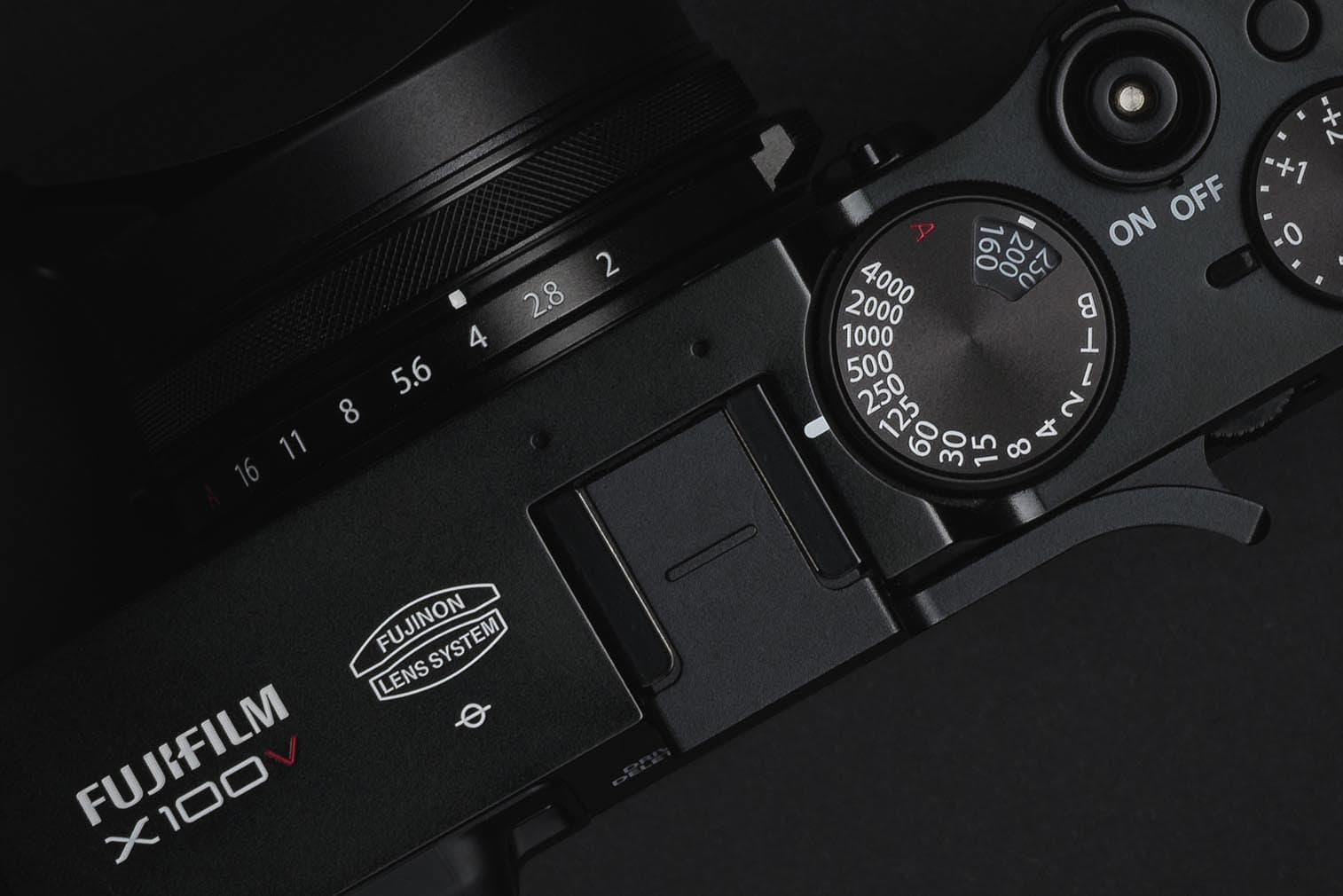
An overhead view showing the Squarehood thumb grip that slides into the X100V’s hotshoe
In the end I chose Squarehood’s offering that’s purposely designed for it. It doesn’t obstruct access to the top plate dials like some cheaper alternatives and by combining it with a mini soft shutter button it has turned it into a camera that’s as satisfying to hold as it is to look at.
I was skeptical at first of how the absence of four-way buttons at the rear might affect operation. Coming from other X100 models you’re immediately aware of how you rely on using the joystick a lot more. The touch functions that let you swipe a finger across the screen to perform a pre-assigned function work well enough, but they encourage you to operate them with your left hand as it’s a bit of a stretch with your right.
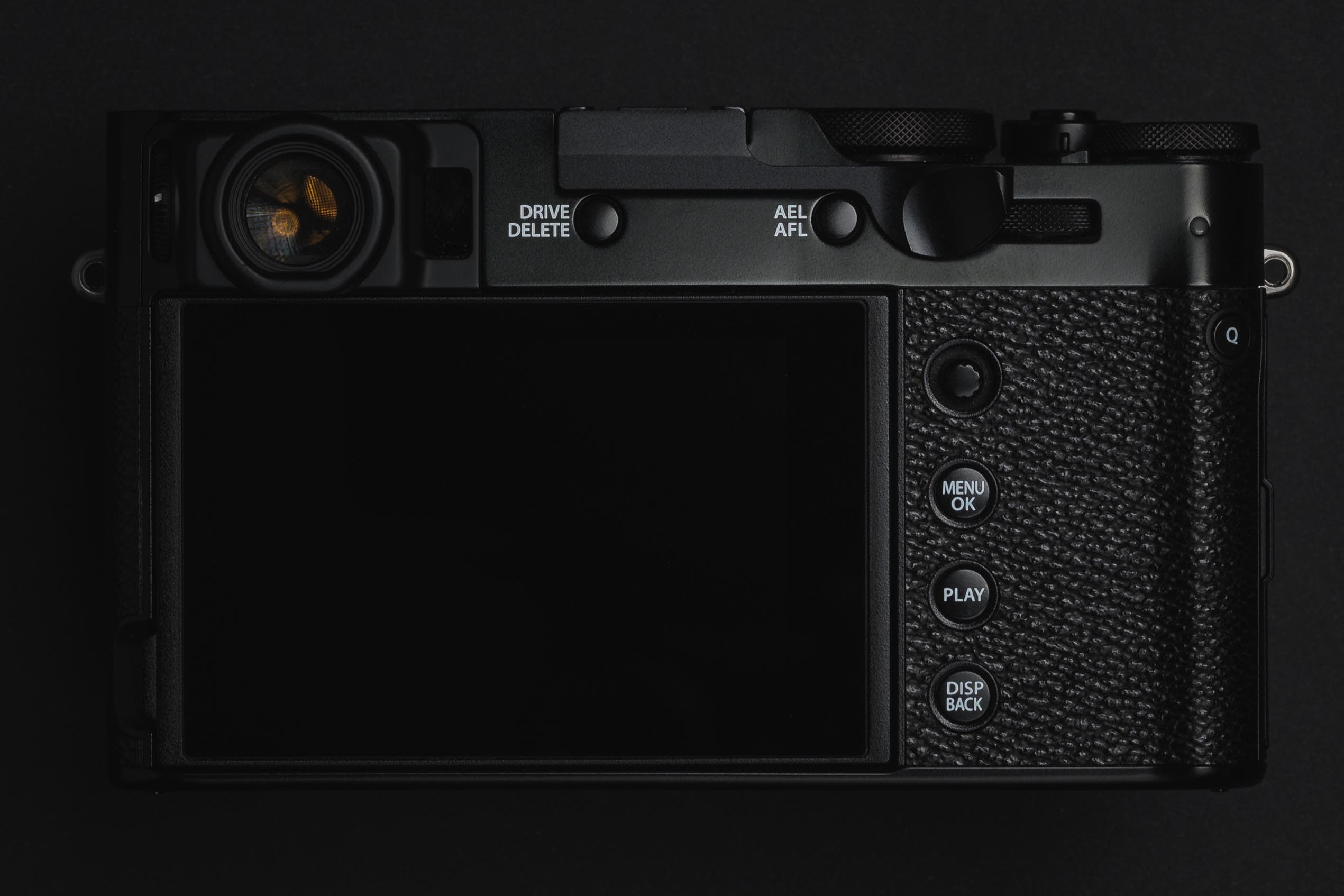
This view illustrates the changes at the rear of the X100V. The joystick and quick menu buttons are fairly small, however they both respond well when they’re used
If you like to shoot single-handed like I do, it feels a little odd not having function buttons below your thumb. This persuaded me to edit the quick menu and take full advantage of all 16 slots to ensure I have the settings I most regularly use a button press away. I’m a fan of the change Fujifilm has made to the Q Menu button. Like the joystick, it’s a tad small and could benefit from a wider surface area, but by positioning it that bit closer to the side of the body you never find yourself pressing it by accident – something that really infuriated me at times when using the X100F.
Fujifilm X100V: What is refurbished?
Fujifilm, like some other camera manufacturers, offer the option to buy refurbished cameras at reduced price from their online shop (https://shop.fujifilm.co.uk). But what exactly is a refurbished camera and can you expect a good example in return?
Now and then, limited quantities of cameras are returned to manufacturers from retailers and it’s these models that trained technicians extensively inspect and test before they’re sold on. Refurbished products may exhibit minor cosmetic imperfections but these in no way impair operation.

Refurbished Fujifilm models are dispatched in boxes similar to the one above. Although it may not be the original packaging, all refurbished modes are supplied with the same contents as a brand new product
There are some great savings to be made choosing a refurbished camera and in the case of my X100V I picked one up in as good as new condition and saved £250 on the guide price. Fujifilm refurbished products come with the same contents as a brand new product, including a 12-month warranty covering any failure that occurs due to a manufacturing defect, which is the same warranty as buying new.
Fujifilm X100V: Shooting from the hip
One of the reasons Fujifilm chose to revise the layout of buttons at the rear was due to a new tilting screen taking up more real estate and what a transformation this has had. The fixed screens on older X100-series models have always put me off and though the X100V’s screen can’t be tilted to assist with low or high angle shooting in the portrait format, it does let you glance down and shoot inconspicuously from the hip without anyone noticing what you’re up to.
This is a huge benefit and I’ve seen thousands of images taken by other photographers on Instagram who’ve also started to reap the reward of being able to frame up and shoot this way without drawing attention to oneself. It’s the thinnest screen Fujifilm has ever made and though some would have preferred the fabulous three-way tilt design from the X-T3, this is likely to have increased body size or stood proud at the rear rather than sit perfectly flush.
Based on how well received the tilt screen has been received on the X100V, it’ll be interesting to see how Fujifilm looks to develop it on the next iteration. I’m sure I’m not alone in saying I hope Fujiiflm don’t introduce a vari-angle touchscreen like the X-T4. I much prefer the idea of a slim three-way tilt screen that tilts discreetly behind the camera than off to the side.
I’m not one for being too enthusiastic when it comes to touchscreen operation and like to use physical controls to adjust settings and operate the camera. If truth be told I’ve found the X100V’s touchscreen a distraction and with limited value (it can’t be used to navigate the main menu and it fails to let you scroll between images quickly in playback) have opted to switch it off at the cost of losing the aforementioned touch functions. Thankfully not all is lost as there are six other controls that can be customised.
Everyone has their own way of setting up their camera, but for me the small Fn1 function button on the top plate is used to access metering mode, while the often forgotten about selector function that operates on a long hold of the toggle switch at the front of the body, is set to employ the built-in 4-stop ND filter without affecting the switching between electronic and optical viewfinders.
As for the Fn2 button within the toggle switch, I’ve kept this set to the to control ring setting. Being able to quickly cycle through the film simulations using the control ring to see the effect they have on the image live is fabulous, I just wish Fujifilm offered a way to turn off the pesky descriptions in the centre of the preview image.
Fujifilm X100V: Useful accessories
There’s no shortage of accessories for the X100V. Some of the best I’ve used and would recommend include NiSi’s Fujifilm X100 Series Professional Filter kit (£53), which provides useful filters such as a 3-stop ND and a super-compact holder at a great price.
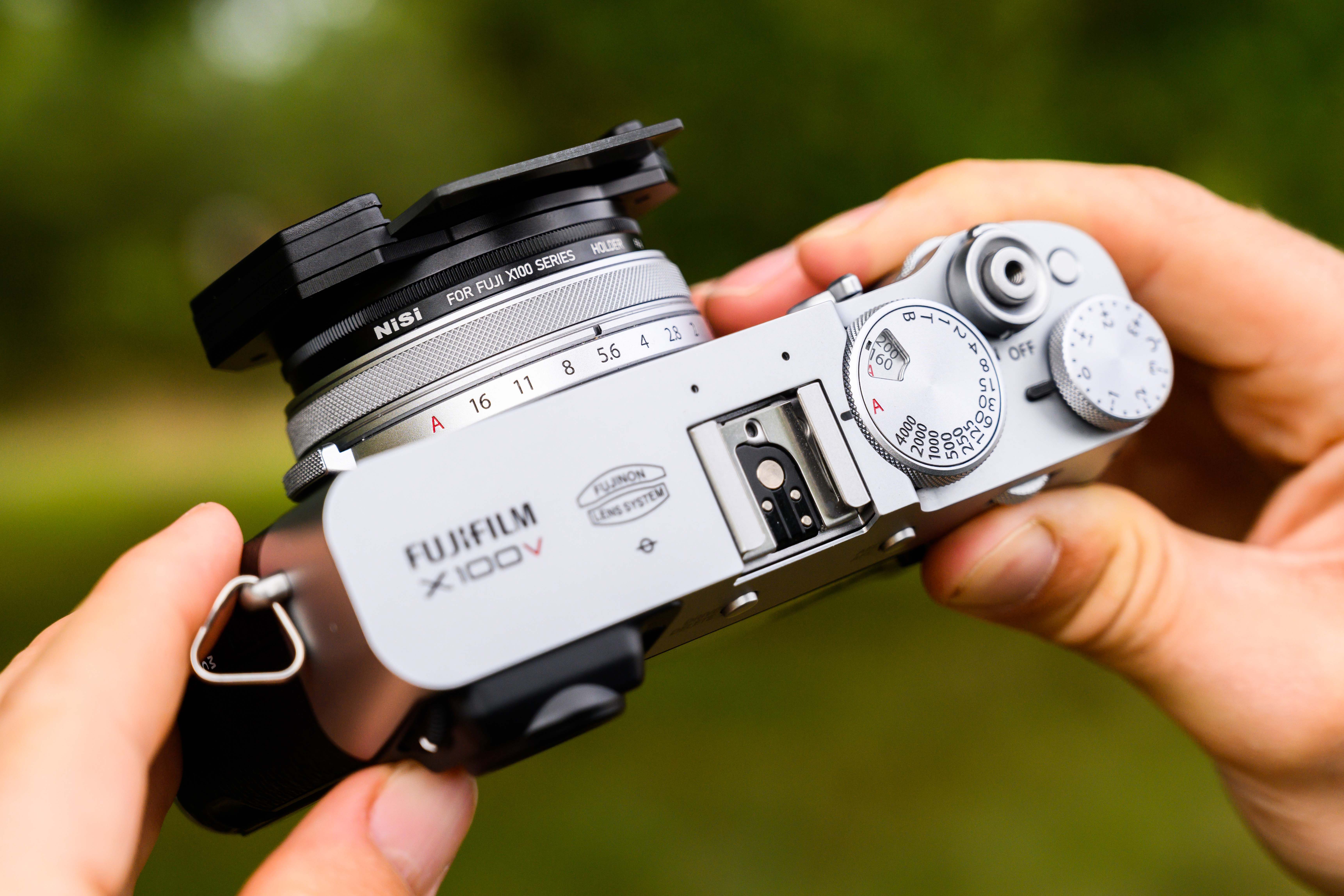
The NiSi Fujifilm X100 Series Professional Filter Kit was originally tested on a black and silver version of the X100V. A full review of the kit can be found here
I’ve also been impressed by the Squarehood thumb grip (£34) and Mini soft shutter button (£9). Fujifilm’s conversion lenses (WCL-X100 and TCL-X100) are great for converting the 35mm equivalent focal length of the lens into 28mm and 50mm respectively, however they do make the camera less compact.
Fujifilm X100V: Stellar optics
When I reviewed the camera twelve months ago I was taken back by just how far the optical performance of the new lens has come from the previous version without any change to its physical size. The improvement in sharpness at minimum focus distance didn’t bother me too much as I rarely shoot close-ups, however what did interest me was the way the lens controlled flare and how it performed wide-open in general use.
I’ve been wary of the complaints X100-series users have made about the issue of flare in the past. As someone who loves to shoot during golden hour and towards the light this has possibly been the biggest factor that’s put me off buying an X100 sooner. Over the last six months I’ve shot hundreds, if not thousands, of shots towards the light and am pleased to say the way the X100V’s new lens controls flare is vastly improved over its predecessors, even without a supplementary hood.
Don’t get me wrong, veiling flare is still evident when it’s directed straight at the sun, but I don’t find it ugly or off-putting and I admire the sun stars it creates when it’s stopped down to f/16. And what about the sharpness wide-open? Countless shots taken at f/2 show it produces tremendous levels of sharpness, with a delightful depth to portraits and other subjects worthy of isolation.
Fujifilm has worked wonders on the lens and the fact it’s no larger means it accepts all existing conversion lenses and accessories. Having tried a friend’s wide conversion lens (WCL-X100) with great success, I’m eyeing up a used example, which at £144 in good condition, seems a bit of a bargain for times when I’d like a focal length equivalent to 28mm to squeeze a bit more in the frame.
My lasting impression of the X100V’s autofocus is that it’s extremely accurate. I’d be lying if I said it has found focus every time in low-light situations or when I’ve been shooting towards the light, but generally speaking it can be relied on to acquire focus where it’s needed when it’s needed with extensive coverage to the edges of the frame.
Acquisition speed isn’t as rapid as some DSLR or mirrorless users may be used to, but it’s still pretty hasty for a lens that shifts in and out during focusing. This is the only weak point in the entire construction, as it requires the use of an adapter ring and filter to make it 100% weather sealed. Those who want to make their X100V weather sealed for less than the cost of Fujifilm’s weather resistant kit (£99) should check out NiSi’s UHD UV filter (£32), which still lets you use the original lens cap.
The fly-by-wire focus ring lacks the beautiful tactile feel of one that’s mechanically coupled, but by using the rear command dial and the joystick together to magnify and inspect focus, I’ve found my hit rate of sharp manually focused shots to be extremely high.
When I’m not under pressure to capture a shot in the moment I often find myself flicking the camera into manual focus for the reason it seems to slow me down to think about the photograph I’m taking in a more deliberate and considered way. And that’s the beauty of the X100V in a nutshell – it has everything you want where you want it to take precise manual control when there’s no rush, with the option to set all the dials to their ‘A’ setting when there’s no time for refinement and you just need to capture the special moment that’s in front of you with no faff.
Fujifilm X100V: Image quality
Another reason for wanting to shoot more with camera and less with a smartphone was the attraction of improved image quality from an APS-C size sensor. The quality of the X100V’s images are exquisite for a camera that comfortably fits my jacket pocket, or my medium-size saddlebag when I’m out riding my bike. I’ve been so impressed by the detail and colour straight out of the X100V I rarely find myself editing images, which has encouraged me to be more thoughtful about getting the shot right in camera at the point of capture.
To accentuate warmth, contrast and vibrancy in my shots I’ve started experimenting by using different film simulation modes and white balance settings. Who knew that the Fluorescent light white balance mode with a warm white balance shift combined with the Velvia film simulation mode creates gorgeous tones that are well suited to sunsets and autumnal scenes. I’ve also found the Acros mode with a hint of warming monochromatic colour and gentle lift to the tone curve works particularly well with vintage subjects to create a real sense of nostalgia.
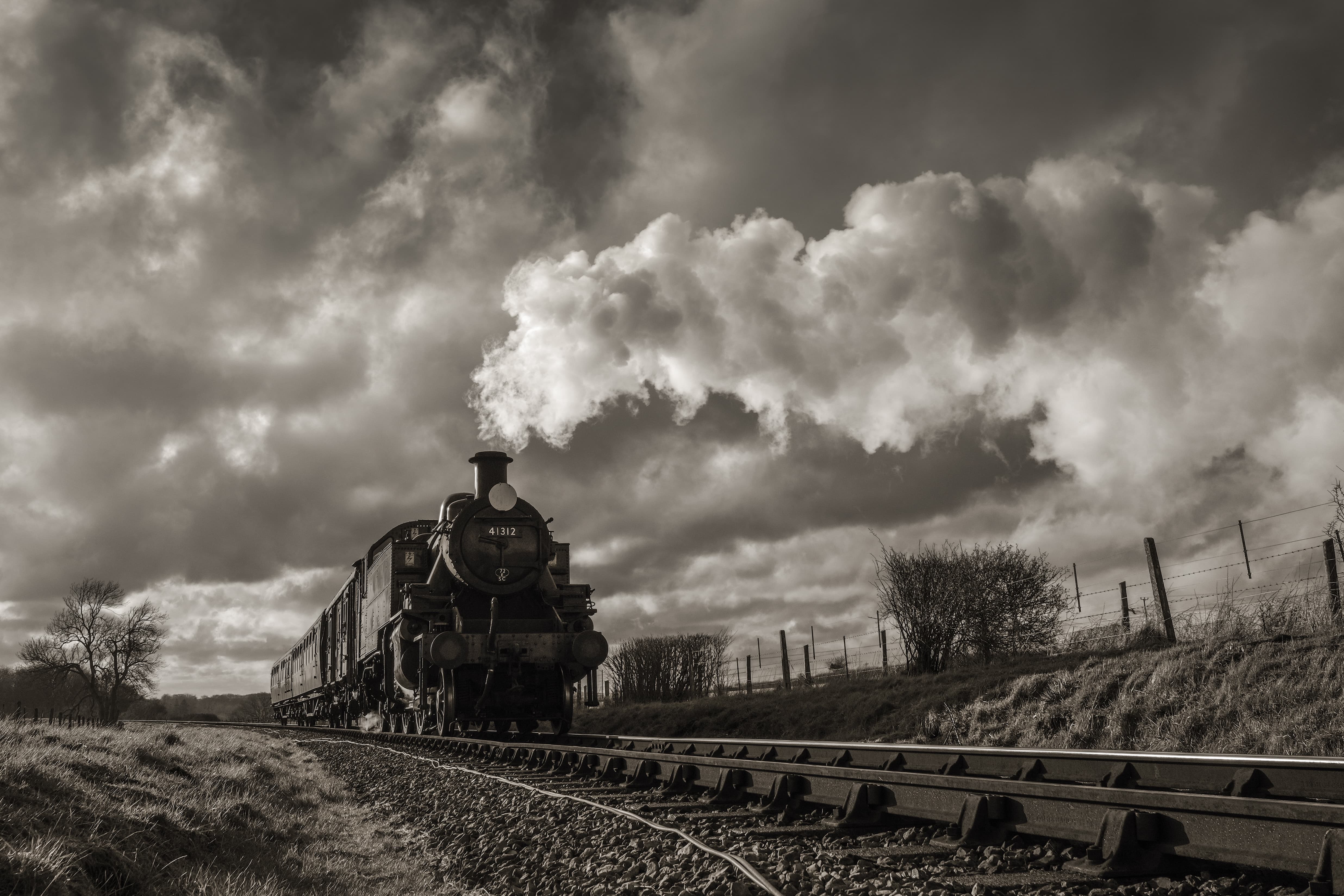
Mid Hants Railway, Hampshire. Taken on a Timeline Events photo charter with granted lineside access. Fujifilm X100V, 1/750sec at f/5.6, ISO 80
Most impressive of all from an image quality perspective has to be the quality of its JPEGs. Unlike some cameras that lay their automated processing down thick, the X100V doesn’t. I haven’t hesitated to print and publish from the camera’s JPEGs (most of the images that support this review are JPEGs), however I always make a point of shooting in JPEG+Raw, with the Raw acting like my negative if it’s needed.
Indeed, I’ve been so impressed by the quality of its output I’m planning to push it into service as my second camera for a few different projects and Weddings I’ve got lined up later this year.
Fujifilm X100V: A masterstroke
If you haven’t worked out by now, I’m smitten with my X100V. It has taken up residency on my sideboard right next to my front door and I take it everywhere I go to capture whatever I might so happen to stumble upon. There aren’t many days that pass when I don’t use it – something I put down to its practical size, but also the sheer enjoyment I get from using it to document daily life.
There’s more to it than this though. Since owning the X100V it has had a huge impact on re-gaining my interest in photography. It has an uncanny way of making me more aware of what’s around me and fills me with energy to get out there and want to take photographs.
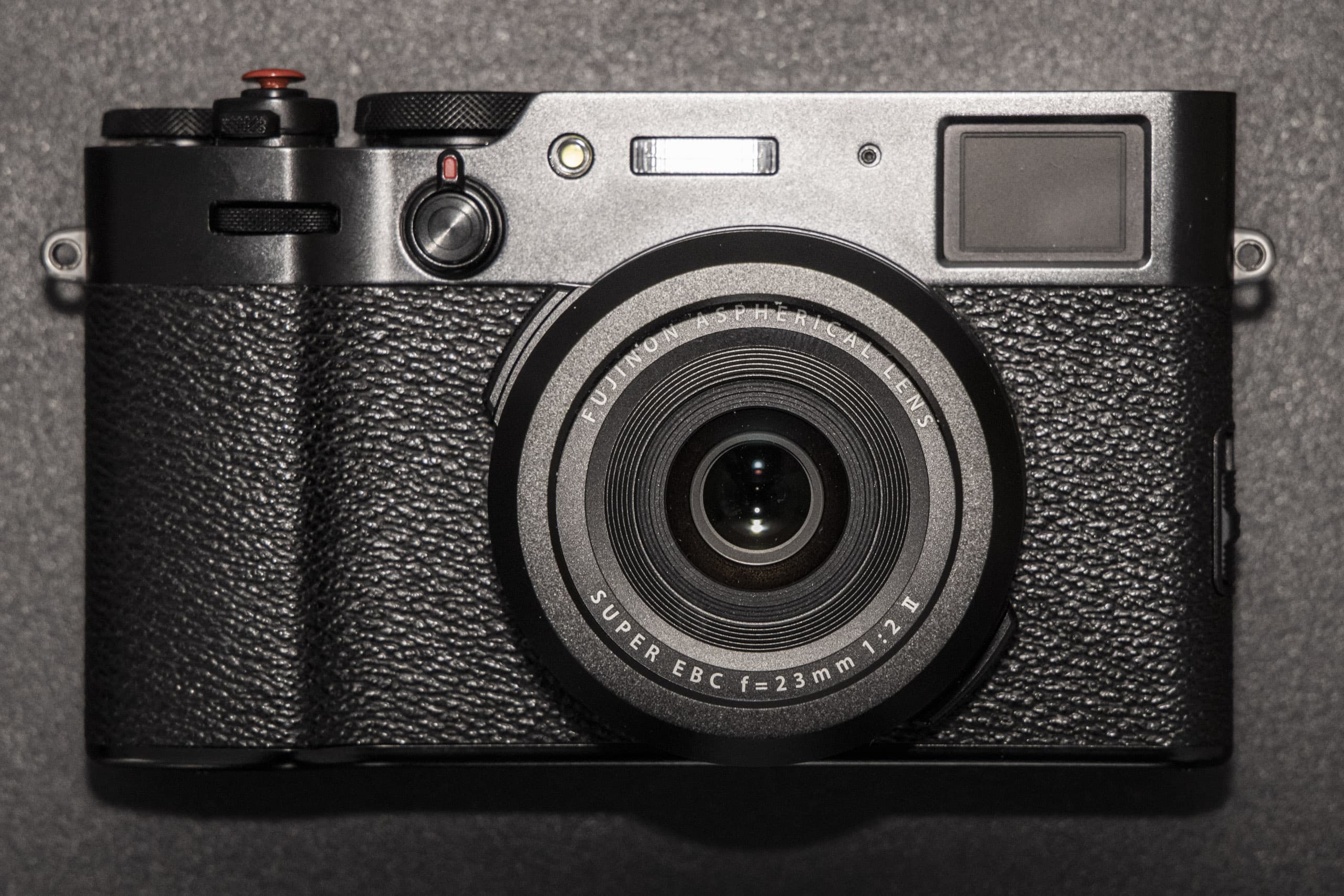
The authors’ Fujifilm X100V. The Squarehood red mini soft shutter button and NiSi’s UHD UV filter are both fitted to the camera
To be honest I never thought I’d fall for a compact with a fixed lens in the way I have with the X100V. I like the way it encourages me to move my feet and think carefully about composition, plus it improves in the areas that put me off buying one before. Fujifilm are one of the best when it comes to listening to the feedback of its users and the outcome is cameras like the X100V, which not only look the part, but are a sheer delight to use.
Anyone in the UK mulling over whether to buy the X100V or not should take up the option to try it for free for 48-hours (www.fujifilm-loan.com). As good as this incentive is, just don’t say I didn’t warn you that it’ll only make you want to buy one even more.
In summary, I’ve used few compact cameras that bestow the same the charm and character as the Fujifilm X100V. It’s a camera worth every penny in my book and has become a firm favourite I can’t imagine being without.


